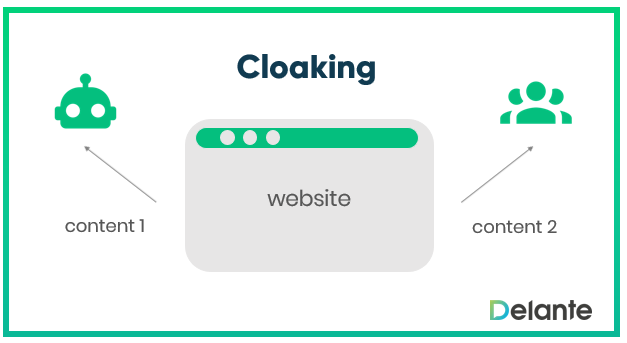
In the dynamic world of online advertising, transparency is paramount. However, a deceitful practice known as ad cloaking undermines this principle. Google Ads, like other major advertising platforms, has strict policies against cloaking, but some advertisers attempt to exploit the system for malicious purposes. Let's delve into the world of Google Ads cloaking, exploring its methods, motivations, and the consequences for those who engage in it.
What is Google Ads Cloaking?
Google Ads cloaking refers to the deliberate act of disguising the true nature of an advertisement. This can be achieved in two primary ways:
- Creative Cloaking: Here, the advertiser presents a seemingly harmless and compliant ad during the Google Ads review process. Once approval is granted, the advertiser surreptitiously switches the ad creative to something malicious or misleading. Imagine an ad initially displaying a picture of a relaxing beach vacation, but later morphing into a deceptive weight-loss scam.
- URL Cloaking: This method involves masking the actual landing page URL associated with the ad. Users might see a generic or innocuous URL, but clicking it redirects them to a completely different website, often containing harmful content or promoting prohibited products.
Why Do Advertisers Cloak Ads?
Several motivations drive advertisers to resort to cloaking:
- Bypassing Google Ads Policies: Google enforces strict guidelines regarding what kind of content can be advertised. Cloaking allows advertisers to sneak past these filters by presenting a sanitized version of the ad initially.
- Targeting Restricted Demographics or Regions: Some advertisers might attempt to cloak ads to target demographics or regions that Google Ads policies restrict them from reaching directly. For example, an advertiser promoting an age-restricted product might cloak their ad to reach a younger audience.
- Promoting Banned Products or Services: Certain products, like gambling or counterfeit goods, are prohibited on Google Ads. Advertisers might cloak ads to promote these products under the radar.
- Inflating Clicks and Conversions: Deceptive advertisers might use cloaking to manipulate their ad performance data. By showing a different ad to users than the one reviewed by Google, they can potentially inflate click-through rates and conversions.
How Does Google Detect Cloaking?
While cloaking attempts can be crafty, Google employs sophisticated measures to identify them:
- Automated Scans: Google utilizes automated systems to continuously scan ad creatives and landing pages for inconsistencies or suspicious patterns. These automated systems can identify sudden changes in content or redirects that might indicate cloaking.
- Human Reviewers: Google maintains a team of human reviewers who can delve deeper into potentially cloaked ads and investigate suspicious activity. These reviewers can analyze ad content, landing pages, and user behavior to identify red flags.
- User Reports: Google relies on users to report cloaked ads they encounter. Users can submit screenshots and details about the deceptive ad, aiding Google's efforts to combat the issue.
The Consequences of Cloaking Ads on Google
For advertisers caught cloaking, the repercussions are severe:
- Account Suspension: Google will likely suspend the advertiser's account, potentially leading to a permanent ban. This can be detrimental to businesses that rely heavily on Google Ads for customer acquisition.
- Loss of Ad Spend: Any remaining budget in the suspended account might be inaccessible. This can be a significant financial setback for advertisers.
- Reputational Damage: Being caught cloaking can severely damage an advertiser's reputation and erode user trust. It can be challenging to rebuild trust with customers after such an incident.
Avoiding Ad Cloaking: Building Trust with Google Ads
The best way for advertisers to steer clear of trouble is to maintain complete transparency with Google:
- Comply with Google Ads Policies: Familiarize yourself with Google's advertising guidelines and ensure your ads adhere to them strictly. There are no shortcuts to success when it comes to Google Ads.
- Maintain Consistent Creatives: Don't alter your ad creatives after approval. The ad you submit for review should be the same ad users see when it's live.
- Use Clear and Accurate Landing Pages: The landing page users arrive at should directly correspond to the advertised content. There should be no misleading redirects or bait-and-switch tactics.
- Focus on Building Trust: Building trust with users through honest and ethical advertising practices is far more valuable than resorting to deceptive tactics. Transparency and ethical advertising lead to long-term success on Google Ads.
Conclusion
Google ad cloaking is a deceptive practice that undermines the integrity of online advertising.

No comments yet